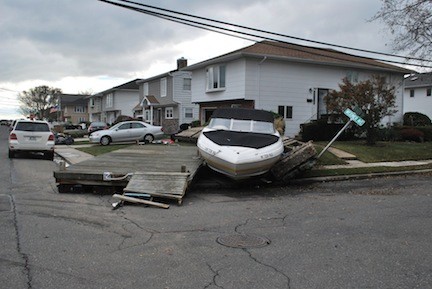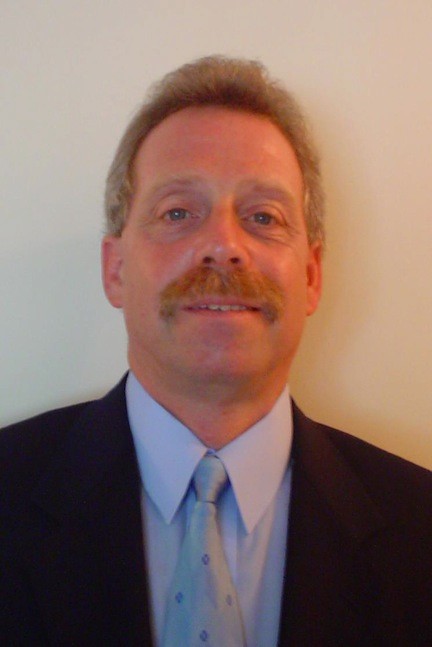Oceanside residents form own CRZ committee
Want to ensure community gets share of pot
The Committee to Help Oceanside Restore After Sandy is up and running. While its acronym, CHORAS, might not be familiar, many of the names of those on the volunteer committee — instituted to make sure that Oceanside gets its fair share of the federal money recently allocated to help Sandy-devastated communities — are.
The committee’s chairman is Ed Scharfberg, a retired NYPD detective who is also a volunteer firefighter and the newest member of the Sanitary District 7 board. His co-chair is Dan Ramos, who heads the Knights of Columbus. Other members of the 11-person committee include Seth Blau, the community’s unofficial historian; Bob Transom, vice president of the school board; retired Fire Marshal Steve Breslin; engineer Diagio Rosano; parent advocate Jo Anne Collabrio; architect Tom Dominico; Allen Igoe and Pat Dougherty.
According to Scharfberg, the committee, which was scheduled to meet for the first time this week, was set up because many Oceanside residents believe the community is getting short shrift in the official Community Recovery Zone process put in motion by Governor Andrew Cuomo two weeks ago. Local committees are being tasked with allocating federal money on both recovery efforts and future storm mitigation.
And, while Scharfberg and the others on CHORAS understand that they are not the official committee, and will legally have no say about how the money is spent, the members hope to work with the officials representatives or perhaps, be placed on the officials committee when it is expanded.
CHORAS members say they will work with the committee that represents Oceanside, Island Park, Harbor Isle and Barnum Island. Those four communities have been allocated up to a total of $25 million, and the officials committee, working with experts provided by the state, will decide how that money can best be spent.
Prior to his announcement, Cuomo chose a Nassau County coordinator, Laura Munafo. Munafo, in consultation with local leaders, chose two co-chairs for the official committee, Island Park residents Steve D’Esposito, a chief of the Island Park Fire Department, and Tommy Asher, a resident whose day care center got wiped out by Sandy and who is also a retired New York City firefighter. Munafo also chose Raymond Pagano, the president of the Oceanside Civic Association and an engineer with the Metropolitan Transportation Authority, to be a member of the official committee.
Munafo’s choice of two Island Park men to co-chair the committee did not set well with Blau, Sharfberg and others. “I felt that it was not a fair decision,” Sharfberg said. “The people she chose were good people, but they do not have the requisite knowledge of Oceanside and what the community needs. One of those co-chairs should have been from Oceanside. We do not believe that we will be fairly represented by the CRZ committee. It’s a simple as that.”
Even the choice of Pagano as a member did not placate Sharfberg. “Ray is a good person, but neither he nor his organization have the pulse of the community,” Sharfberg said. “We are willing to work with Ray and the rest of the official committee to see if the money can be used to prevent that kind of damage in another storm.”
“There is no transparency in the official process,” Blau said. “It was supposed to be ground-up, but the critical choices were made before the process was even announced. How ground-up is that? We want to make sure that the funds go to the right place, to the right fixes. Ours is a truly bottom-up committee, which is what the governor wants, with true representation from the community. I am optimistic that we can move the process along.
“We are not criticizing anybody,” Blau added. “We just want to be positive and help the community get what it deserves.”
Transom put it more succinctly. “I got involved with the new organization because Oceanside was left in the lurch,” he said. “With both co-chairs from Island Park, Oceanside takes a back seat.”
According to guidelines promulgated by the state, each official committee will have nine to 15 members — experts on planning, zoning, economic development, transportation and public works, representatives of commercial, environmental, housing and human services organizations, representatives of vulnerable populations and emergency management personnel.
Members of the committees will not be paid, and will have to follow a detailed code of ethics, the guidelines say.
Through the CRZ planning process, communities will asses their vulnerabilities, identify where funds should be spent to address those vulnerabilities and then develop projects that will increase resilience while also protecting the communities along the shoreline and promoting sound economic development.
Sharfberg said that his committee, which he says really represents the Oceanside community, already has some ideas and is looking to the Town of Hempstead and the state to help out by supplying experts to work with it. “We are thinking about trees along the shoreline, [and about] ways to sustain the community with food and shelter for two or three days until the town and the county can get to us with assistance,” he said. “We’re thinking about places to eat and sleep should the high school get flooded out. We’re looking to prevent damage rather than to rebuild after the devastation. We’re not sure what we can do, but with the help of some experts, we can figure it out.
“How would you feel,” Sharfberg continued, “if you lived in Oceanside and were devastated by the storm, and then two Island Park residents get picked to decide what is best for you and your property? We just want what is fair for everybody.”

 47.0°,
Mostly Cloudy
47.0°,
Mostly Cloudy 







